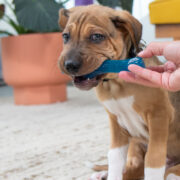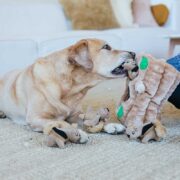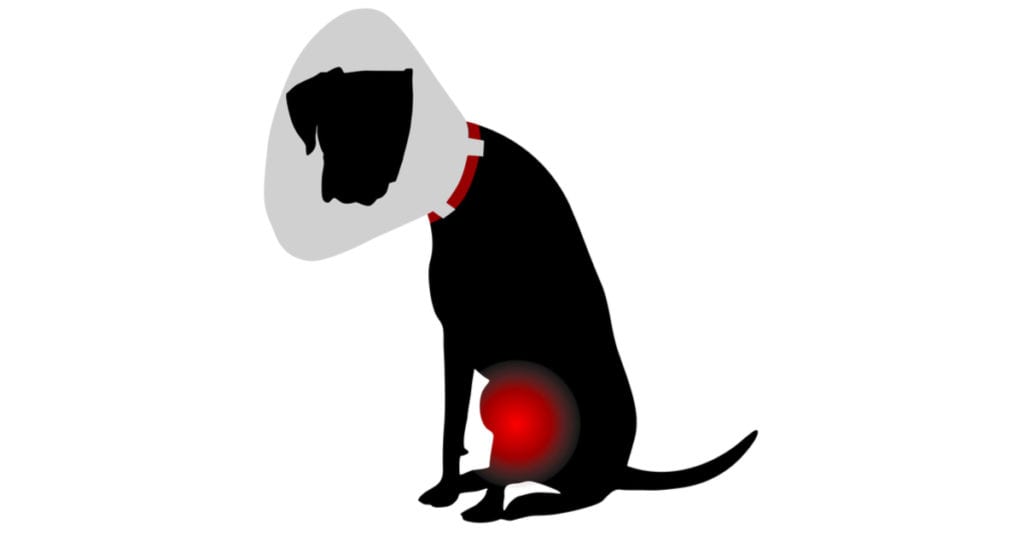
If you’ve been to the vet recently because your dog was showing lameness in one of their hind legs, your vet might have told you they blew their CCL, or cranial cruciate ligament. A CCL tear in dogs is the equivalent of an ACL (anterior cruciate ligament) tear in humans. While some knee injuries can be dealt with by conservative management, most dog parents opt to move forward with TPLO surgery.
TPLO stands for tibial plateau leveling osteotomy. During a TPLO procedure, veterinary surgeons reposition the top of the tibia (shin bone). By re-positioning the tibial plateau (the upper portion of the shin bone), the knee joint is stabilized. This essentially eliminates the need for the CCL.
While this all sounds pretty scary, it helps to educate yourself as much as you can about the injury, surgical procedure, and recovery process.
Some pet owners psych themselves out by doing too much digging (ahem — this writer). Just remember that it’s always OK to ask your vet questions and that this kind of surgery is done all the time. At the end of the day, you need to do what’s best for your dog.
How Serious Is a CCL Tear?

According to the Veterinary Health Center at the University of Missouri, CCL tears or CCL ruptures are the most common injury affecting the knees of dogs. Here’s what happens when a dog tears its CCL:
“Normally, the CCL stabilizes the knee when the dog places weight on the leg. When the ligament either completely or partially torn, the knee becomes destabilized. Inflammation and osteoarthritis follow and the knee becomes a chronic source of pain and disability for the dog.”
Dogs, especially large breeds like labradors or rottweilers, can do this kind of damage to their knees in a number of ways. Particularly active dogs who frequently put force on the ligament whether playing fetch, jumping around, or running will injure themselves this way.
(My dog likely did his knee in by chasing a ball on my wood floors, slipping and sliding like a cartoon dog on an ice rink.)
What About TTA?
There is another surgical technique for torn CCLs called tibial tuberosity advancement, or TTA. In TTA, surgeons adjust the angle of the tendon to neutralize tibial thrust, which is what happens when a dog puts weight on the knee joint.
According to academics at Cornell University’s College of Veterinary Medicine, TPLO is superior to TAA because:
“An up to 50% incidence of meniscal tears within one year post surgery, as well as the inability to return the dog to normal weight bearing … resulted to have the TTA be removed from the pool of possible surgeries to treat CCLR in various private practices and academic veterinary surgical centers…”
Bear in mind that TPLO has a very high success rate. About 95% of dogs return to normal limb function and can resume activity they did pre-tear without complications.
What Is TPLO Recovery Like?
I won’t lie to you — TPLO recovery takes a long time. The good news is, if you commit and are well prepared ahead of your dog’s scheduled surgery, they’ll recover in no time.
You CAN do this. Follow your veterinarian’s post-op instructions to the letter, show up for follow-up appointments and x-rays, and be consistent with physical therapy, pain management, and range of motion exercises.
Make sure you have enough anti-inflammatory pain medication and monitor your dog’s sutures for any sign of infection.
Personally I went a little overboard with researching TPLO surgery and post-operative care and recovery tips. However, I got some of the best advice from a surprising resource: social media.
I met a handful of fellow bully breed parents who had already gone through the whole process with their dog by searching for posts under the hashtags “#TPLO” and “#TPLOrecovery.” I found that these users were more than happy to connect and share their post-surgery experiences.
They also pointed me to a TPLO group on Facebook filled with dog parents who will answer questions, give updates on their pup’s recovery, and share post-op tips and advice. I found the support from this online community invaluable.
How to Prepare for the TPLO Surgery Recovery Period
I got a lot of valuable information that eased my anxiety and helped me get my dog through recovery. Here are some highlights to make your dog’s recovery as effective and as comfortable as possible:
- It bears repeating: follow your vet’s aftercare instructions to the letter! Consistency is key.
- Get your dog on a quality joint supplement (it’s a good idea to do this even before surgery).
- Invest in interactive dog toys, treat dispensers, or a slow feeder. For several weeks, your dog is not allowed to run around, romp, or go on long walks like they could pre-TPLO. Give them as many tools for mental stimulation as possible.
- Careful with the treats to avoid weight gain — your dog won’t be able to burn as many calories as before.
- Start with very short, slow leash walks. Follow the post-operative instructions on how best to work your way up to 5-, 10-, then 15-minute walks week-to-week.
- Freeze peanut butter, pumpkin, Greek yogurt, bananas, or blueberries in a treat toy to keep your dog occupied for longer.
- Section off an area in a room that will be their recovery corner. Use a pet gate or x-pen to keep their movements restricted.
- Give them a change of scenery every once in a while. If you have a yard, section of an area where they can lay down to enjoy the sun.
- Think about getting a rear harness to support their hind legs as they walk around, use stairs, and get in and out of cars.
- Attend the recheck appointments. Your vet needs to evaluate your pup’s healing progress, check the weight-bearing of the surgical leg, and take radiographs to check bone healing.
You can always reach out to a number of resources for more TPLO recovery tips information. Your DVM, veterinary surgeon, and even pet parents who have been through this process before are there to guide you.
Do Your Due Diligence
As with any surgical procedure, there are risks. Ask your vet about possible common complications with TPLO surgery and recovery.
Know that TPLO is very expensive. If you don’t have pet insurance, ask for referrals for various veterinary surgeons in your area. It’s OK to shop around as long as you find a reputable veterinary practice you can trust to take care of your furbaby. You can also compare prices for rehab services like underwater treadmills.
At the end of the day, you need to make the best decision for your pet so they can live a happy and healthy life. They’ll thank you in the long run.
Gear up for Post-Op Fun!
Yes, fun! One of the best activities recommended for dogs after TPLO recovery is swimming. It’s a fantastic exercise that burns a lot of energy. Best of all, it’s easy on your dog’s joints, making it one of the safest post-op activities as well.
Jack was very new to swimming when I started taking him to a dog aquatic center and hates getting water in his ears, so he always wears a life jacket a comical donut around his head.
If you want to take your dog for water activities after you get the go-ahead from your vet, consider getting a life jacket for safety. Especially if they are new to swimming.
If your dog has gained weight as a result of limited mobility during recovery, swimming is great for getting them back in shape. It’s also effective for burning all the pent-up energy. After one 30-minute swimming session, Jack is happily checked out for the rest of the day.
Items to Keep Your Dog Comfortable & Mentally Stimulated During Recovery
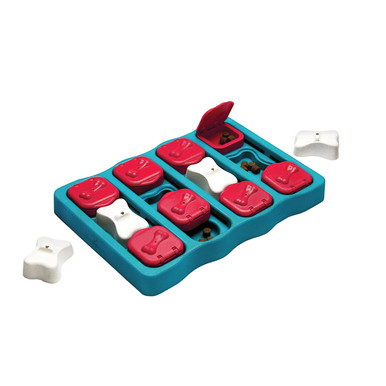
Dog Brick Interactive Treat Puzzle Dog Toy, Blue
The Nina Ottosson by Outward Hound Dog Brick level 2 puzzle dog game will keep your dog entertained for hours as they use their natural hunting skills to seek out the hidden treats! This toy comes with 3 easy-to-fill compartments to hide your dog’s favorite treats and snacks in. Flip lid compartments open up to reveal the first compartment and can also slides to reveal a hidden second compartment…
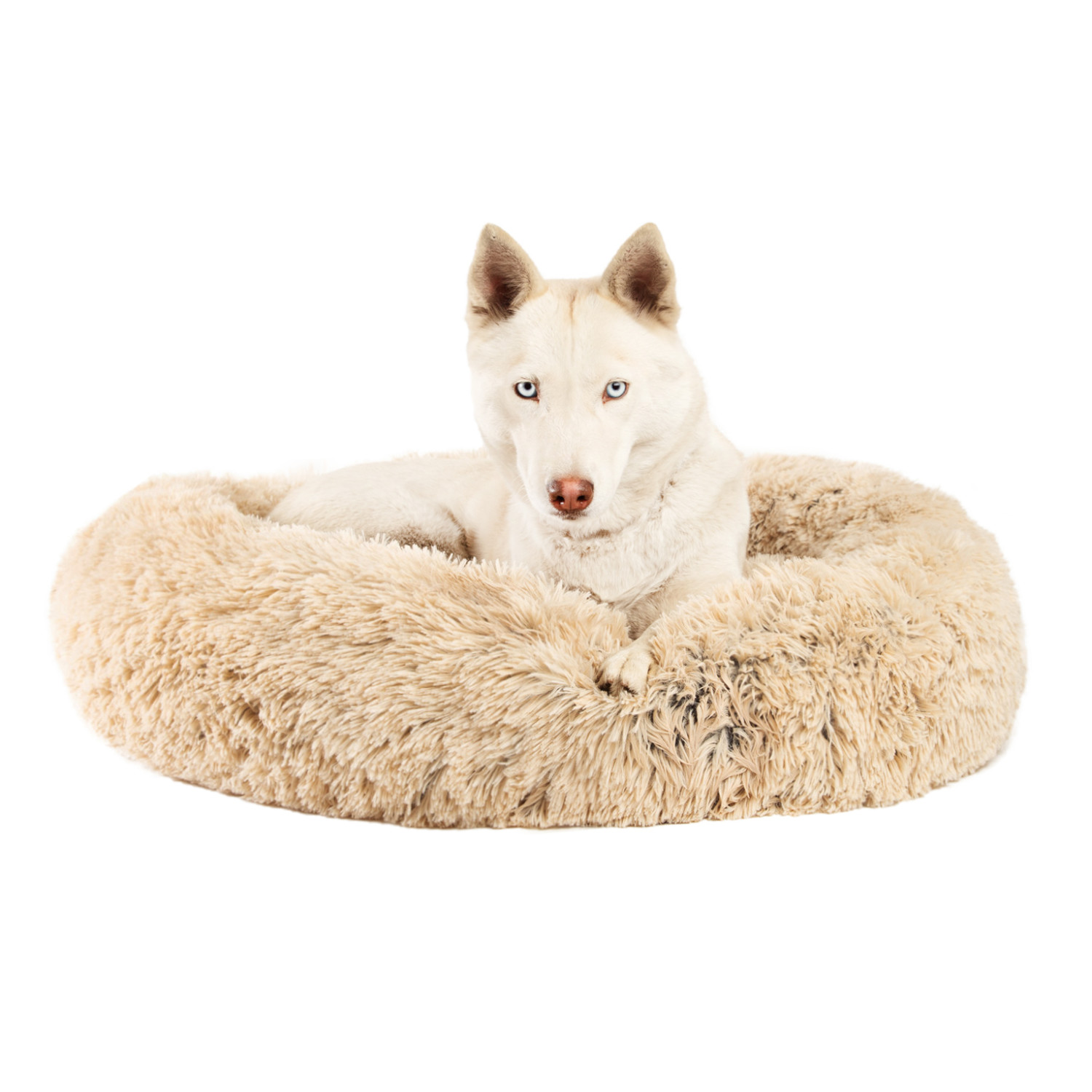
The Original Calming Donut Shag Cat & Dog Bed
Give your pet more than just a dog bed! Best Friend’s by Sheri is the original creator of the most popular dog bed that has surfaced the internet in recent years: The Calming Donut Dog Bed. This innovative cuddler shag design provides better sleep, supports joints, and offers a calming, self-warming effect. The donut cuddler is carefully crafted with durable, vegan nylon and filled with AirLoft fibers,…
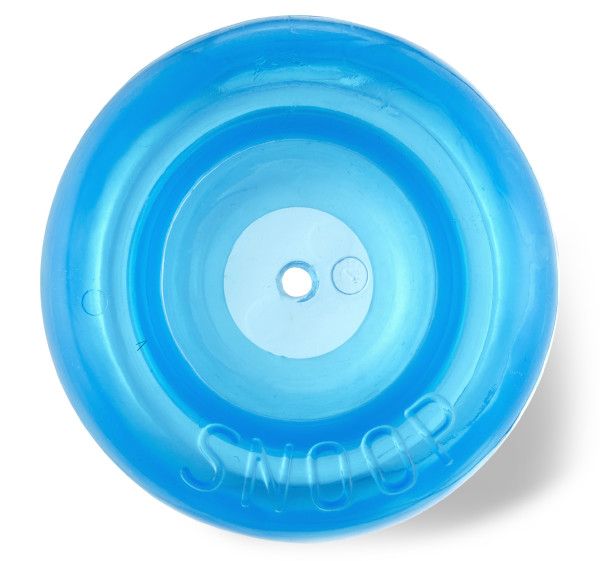
Orbee-Tuff Snoop Interactive Treat Dispensing Dog Toy, Large
Planet Dog’s multiple award-winning Orbee-Tuff Snoop challenges the brain in fun and stimulating ways! This interactive dog puzzle toy is great for bored pups who need a rewarding brain teaser or to encourage slower eating habits in fast eaters. The Snoop is translucent and squishy with a deep crevice that conceals the treats. Just pop open, fill with treats, and pop back in before playing with your…

Carrot Stuffer Treat-Dispensing Interactive Dog Toy, Orange
The Petstages Carrot Stuffer is a treat-dispensing interactive dog toy that’s designed to make snack time more exciting. Brightly colored and shaped for an unpredictable bounce to make each playtime and snack experience a blast! With three separate treat-stuffer openings, you can reward your pup’s hunting skills with multiple tasty treats such as kibble, peanut butter, and bully sticks. The durable natural…
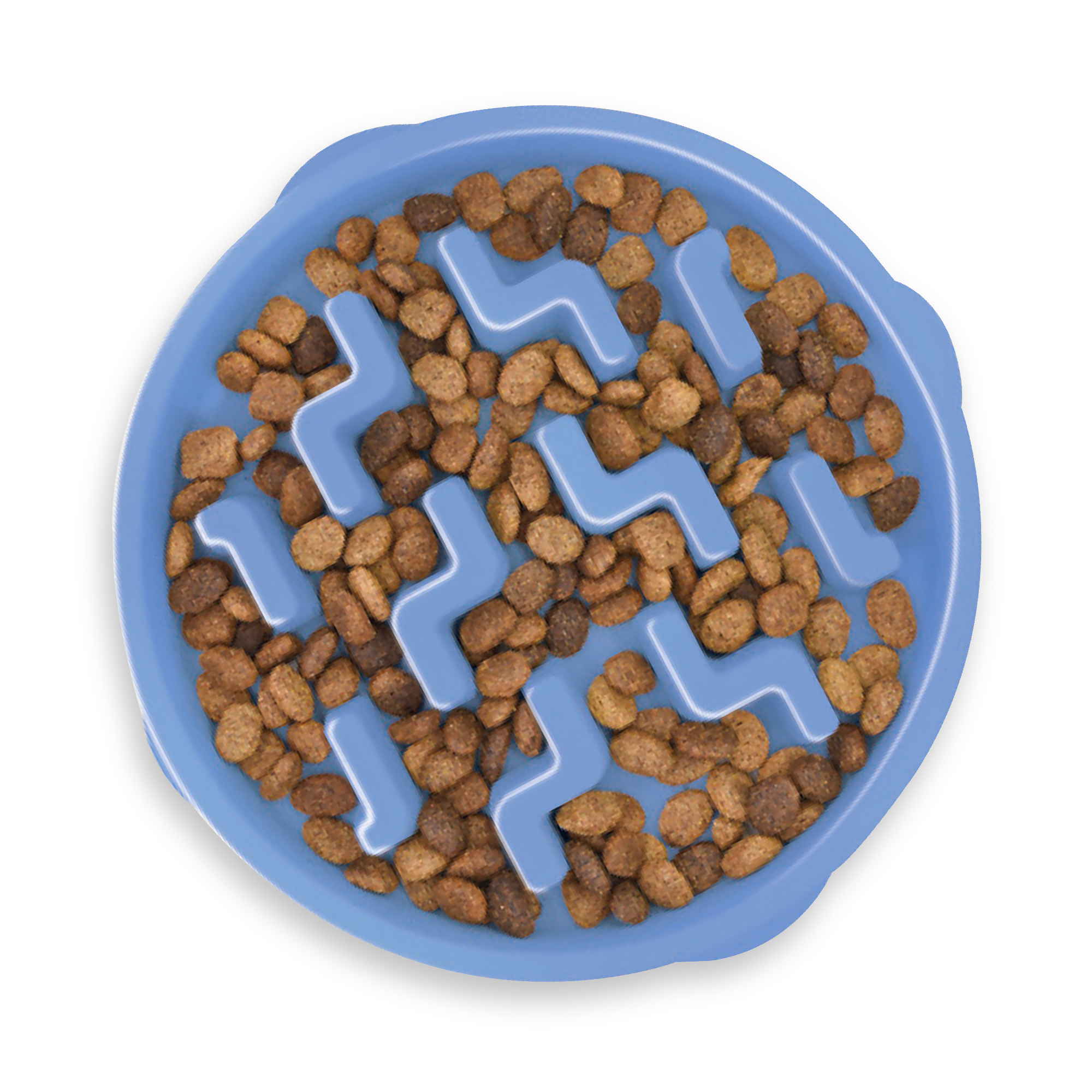
Fun Feeder Slo Bowl, Slow Feeder Dog Bowl
Why do dogs feel like eating is a race? We’re not sure, but we solved the problem anyway. With meal-lengthening ridges, deep grooves, and challenging mazes, Outward Hound Fun Feeder Slo Bowls keep pups engaged for up to 10x longer at chow time. By creating a fun, healthy eating pace, our slow feeders help reduce obesity and bloat and improve your dog’s digestion for happier, healthier pups…
This post contains affiliate links. If you make a purchase after clicking one, Outward Hound may receive a small commission.
 Chewy
Chewy Amazon
Amazon